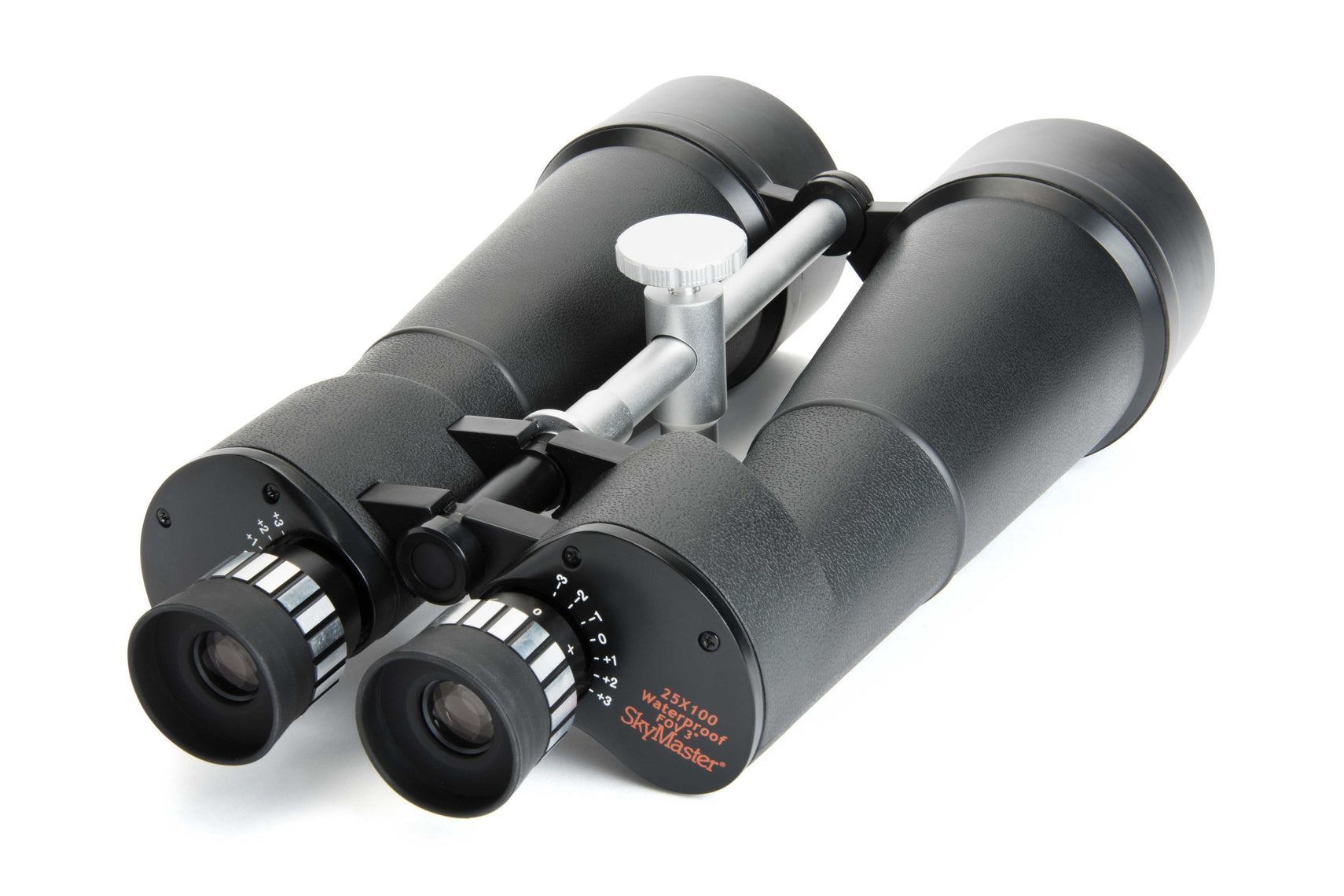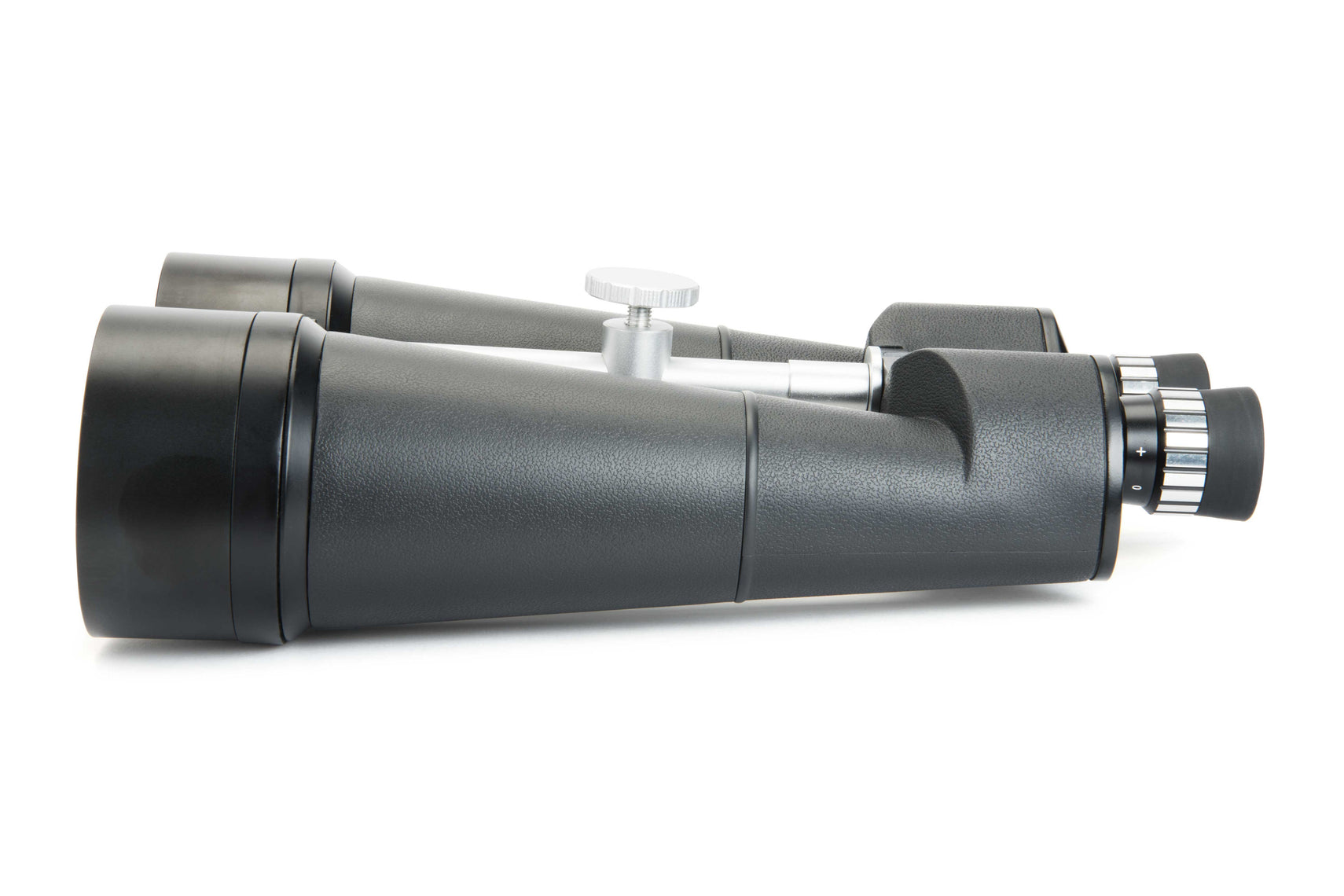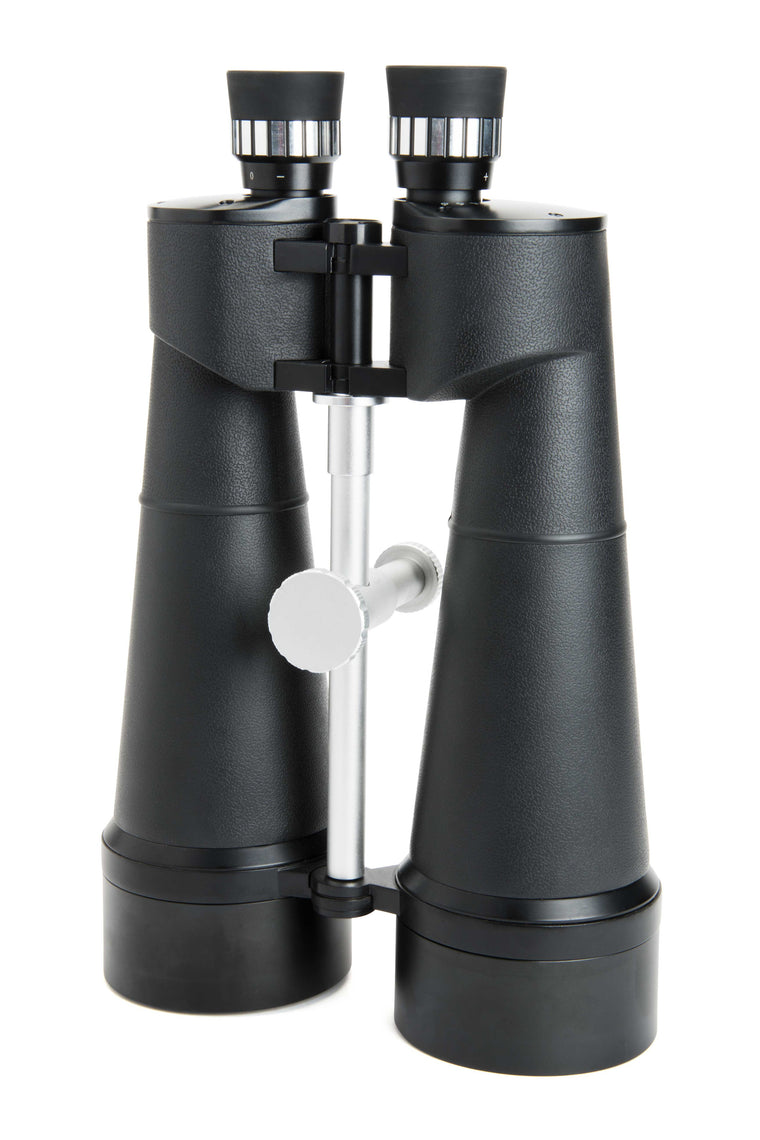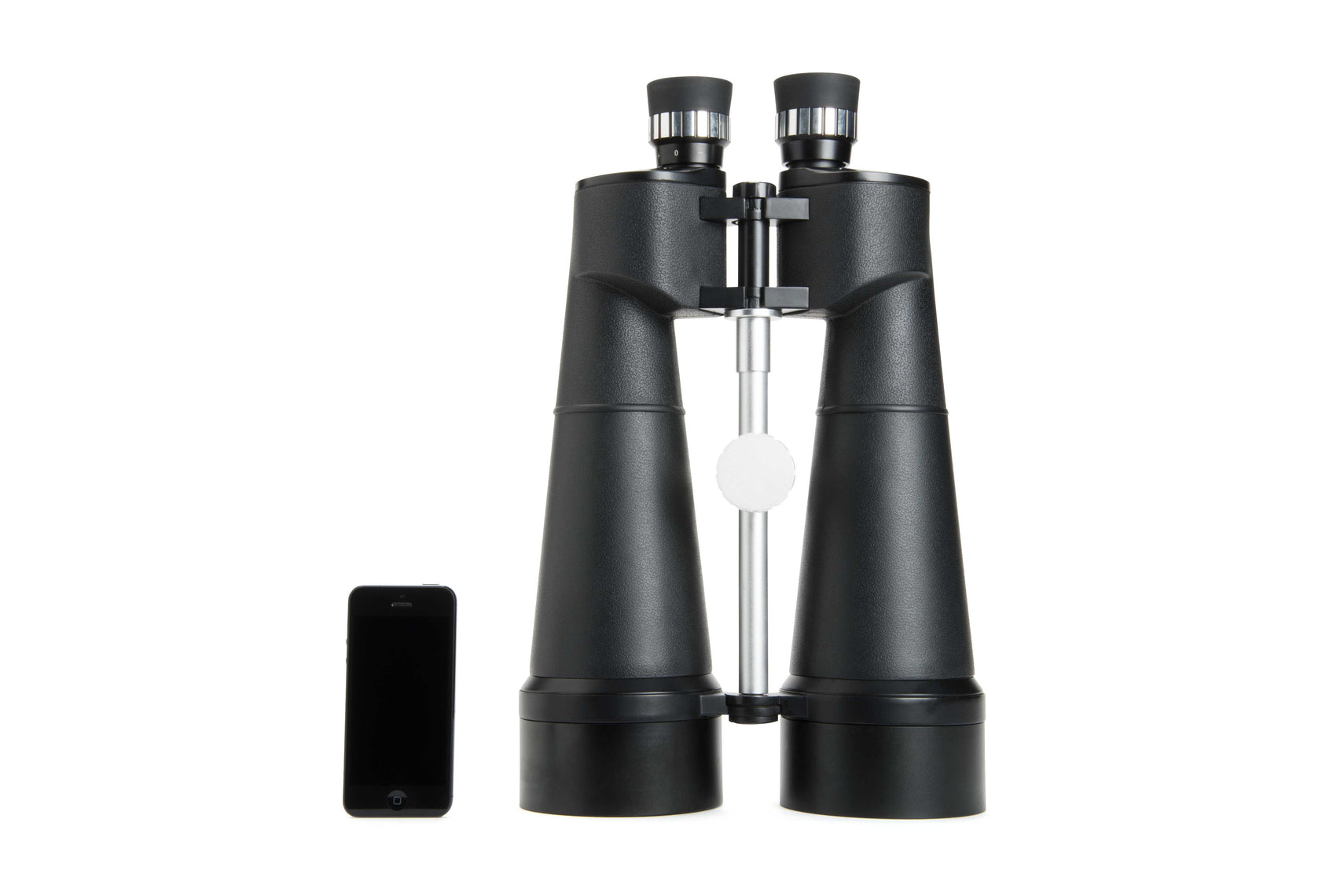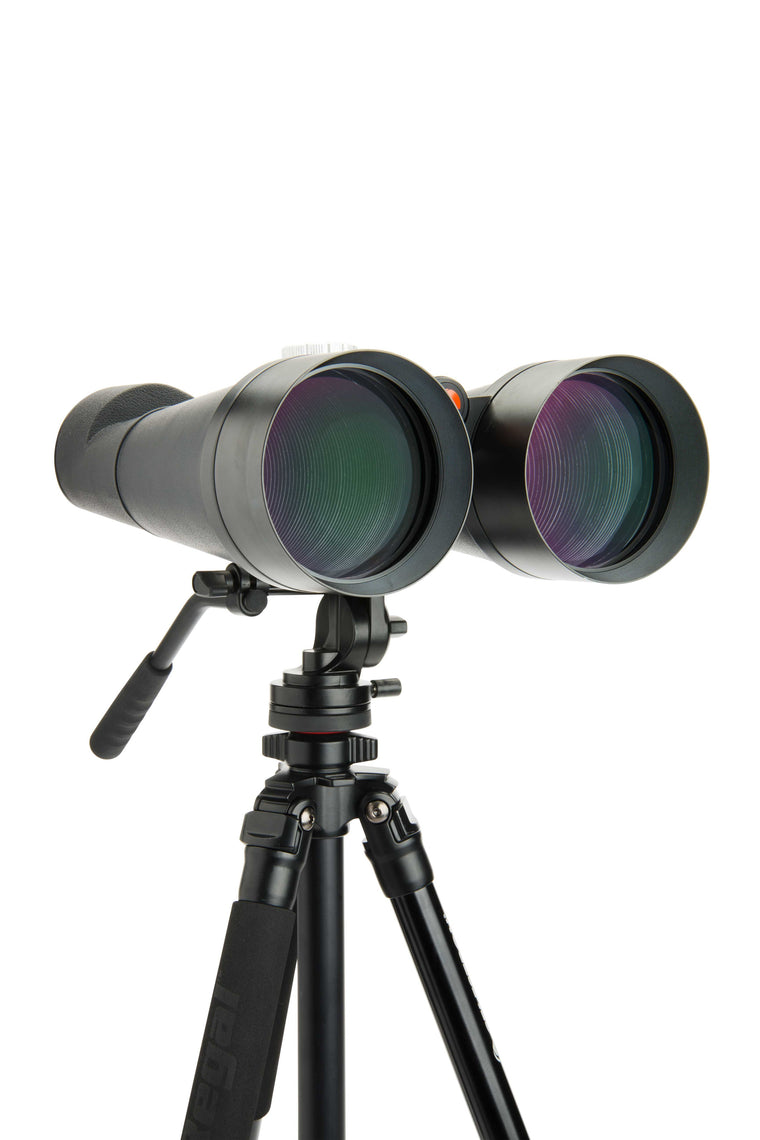Product Description
Celestron SkyMaster 25x100 Astronomy Binoculars
High-Powered Binoculars for Astronomy and Long-Range Viewing
The Celestron SkyMaster 25x100 Astronomy Binoculars are designed for serious stargazers and long-distance terrestrial observers, offering exceptional magnification, image brightness, and clarity. With 25x magnification and massive 100mm objective lenses, these binoculars excel in low-light conditions and long-range viewing, making them perfect for astronomical observations and terrestrial spotting over vast distances.
Outstanding Optical Performance
- 25x Magnification – Provides high-powered zoom for detailed long-range viewing.
- Giant 100mm Objective Lenses – Maximises light collection, delivering bright, high-contrast images, even in low-light conditions.
- Multi-Coated Optics – Enhances light transmission and image sharpness for vivid, clear views.
- Ultra-Sharp Focus Across the Field of View – Ensures crisp details across the entire image.
- BaK-4 Porro Prism System – Improves contrast, colour accuracy, and depth perception.
Designed for Comfort and Stability
- Individual Eyepiece Focus – Allows for precise focusing on each eye for optimal clarity.
- Long Eye Relief – Makes extended viewing comfortable, even for eyeglass wearers.
- Protective Rubber Coating – Ensures a secure, non-slip grip, while adding durability.
Built for Serious Observing
- Integrated Tripod Adapter Rod – Provides superior stability when mounted on a tripod, essential for long observation sessions.
- Enhanced Structural Reinforcement – Maintains optical alignment, ensuring years of reliable performance.
- Deluxe Padded Carrying Case – Offers safe storage and easy transport for your binoculars.
Perfect for Astronomy and Long-Range Viewing
The Celestron SkyMaster 25x100 Binoculars are ideal for:
- Astronomical Observations – Observe lunar craters, planets, and deep-sky objects with stunning clarity.
- Terrestrial Viewing – Perfect for spotting ships, landscapes, and wildlife at extreme distances.
- Low-Light Viewing – Ideal for dawn, dusk, and nighttime observations.
Durable and Backed by a Limited Lifetime Warranty
Engineered for serious observation, the Celestron SkyMaster 25x100 Astronomy Binoculars offer powerful magnification, crystal-clear optics, and rugged construction for both terrestrial and celestial viewing. Backed by Celestron’s Limited Lifetime Warranty, these binoculars are built to provide years of breathtaking views of the world around you and the night sky above.
| Magnification: | 25x |
| Objective Lens Diameter: | 100mm (3.94") |
| Focal Length of Objective Lens: | 417.32mm (16.43") |
| Angular Field of View: | 3° |
| Linear Field of View (@1000 yds) / @1000 m): | 156 ft (52 m) |
| Exit Pupil: | 4mm (.15") |
| Eye Relief: | 15mm (.59") |
| Close Focus: | 80 ft (24.4 m) |
| Interpupillary Distance (max): | 72mm (2.83") |
| Interpupillary Distance (min): | 56mm (2.20") |
| Diopter Adjustment Range: | ±5 |
| Twilight Factor: | 50 |
| Relative Brightness: | 16 |
| Limiting Stellar Magnitude: | Ideal: 12.50 | Moderate: 11.50 | Poor: 10.50 |
| Lens Coatings: | Multi-Coated |
| Prism Glass (Type): | BaK-4 |
| Prism Coatings: | N/A |
| Weight: | 140 oz (3969 g) |
| Environmental Protection: | Water Resistant |
| Nitrogen Filled: | No |
| Tripod Adaptable: | Yes |
| Carrying Case: | Nylon |
| Dimensions: | 256mm x 130mm x 388mm (10.1" x5.1" x 15.28") |
| Included Items: | Objective lens caps Rainguard Carrying case Neck strap Lens cloth Instruction manual |
Payment & Security
Your payment information is processed securely. We do not store credit card details nor have access to your credit card information.



